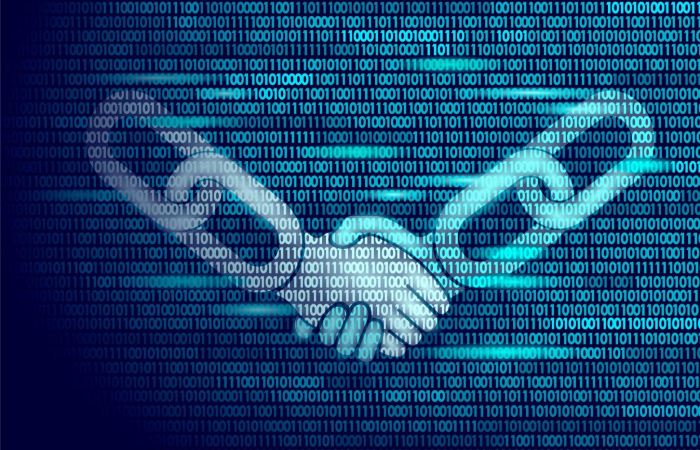Table of Contents
Introduction
There are two types of people in the world: those who understand the binary counting system and those who don’t! Or as the famous phrase says. The binary counting system is a central system for representing specific numbers and information.
We generally find it used in many different applications in our lives. The most important, of course, are computers and specialized machines. These machines do not understand the meaning of the number (8), the meaning of number (20), the meaning of letter (a), or the meaning of the symbol (%).
So if we want to tell her detailed information for one reason or another. We have to find the best and most efficient way to communicate information. For example, how can you tell a machine that you have (8) apples? What is the shortest and least expensive way to represent this numerical ratio (we don’t need to tell the machine that they are apples. We want to say only about the number)?
Simplification Using Binary Numbers

To simplify, we know that machines can understand the language of electrical signals. So if we want to tell a particular verse that we have (8) apples, we can send eight electrical alerts to the machine sequentially, telling them about the information we have. 8 signals are often costly. So we can simplify it a little bit and save a lot materially on this side if we use the binary counting system. We can provide at least half of these signals. How so?
In the binary counting system, numbers are represented as a series of only two values: (0) and (1). the image attached to this article shows strings representing numbers from 0 to 15. traditionally, in a binary counting system that does not include negative numbers, the number 0 can be represented by (0), (00) or (000) indefinitely (adding zeros to the left of the number does not change its value). Likewise, the number one is represented by (01), (001) or (0001) indefinitely as well.
What does this have to do with sending signals to a traditional machine?
You can see in the attached image that if we want to send the information machine that we have eight apples, all we have to do is send only four signals (or use only 4 bits, if we want to use computer language), instead of the 8.
Efficiency through binary Counting
This efficiency and effectiveness of the binary counting system and other features that we have not experienced make it the best candidate for use in computer and electronic applications. Therefore, it is essential to learn to count in this system. Especially if you want to preliminary understand the technology surrounding us.
Bitwise Operation
Though not directly related to the numerical interpretation of binary symbols. Sequences of bits may be manipulated using Boolean logical operators. When a string of binary symbols conduction in this way, it exists called a bitwise operation; the logical operators AND, OR, and XOR may be performed on corresponding bits in two binary numerals provided as input.
In addition, the logical NOT operation may perform on individual bits in a single binary digit supplied as input.
Sometimes, such operations may exist used as arithmetic short-cuts and may also have other computational benefits. For example, an arithmetic shift left of a binary number is the equivalent of multiplication by a (positive, integral) power of 2.
History of Binary Counting
In the 16th and 17th centuries, Thomas Harriot, Juan Caramuel y Lobkowitz, and Gottfried Leibniz studied the modern binary number system in Europe. However, procedures related to binary numbers have appeared earlier in multiple cultures, including ancient Egypt, China, and India. The Chinese specifically inspired Leibniz.
Conclusion
The base-2 numeral system is a positional notation with a radix of 2. Each digit referring to as a bit or binary number. Because of its straightforward implementation in digital electronic circuitry using logic gates. The binary system exists used by almost all modern computers and computer-based devices. As a preferred system of use, over various other human communication techniques, because of the simplicity of the language.


